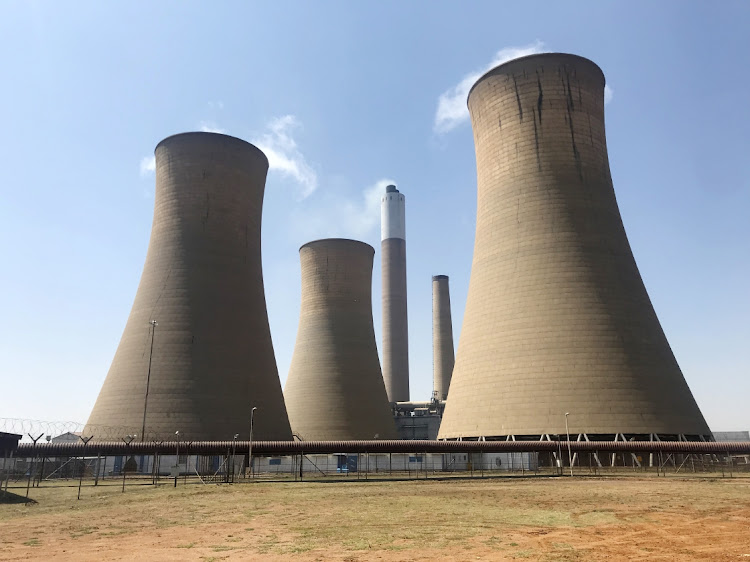Budget recipe skips important ingredients

The big risk remains the public sector wage bill
There is always some coincidental symbolism between the overall budget framework and the lunch packs served to economists in the lockup. We moved from a buffet menu in the pre-Covid era to lamb chops in 2021 as a practical implementation of cutting the fat.
This year’s lunches, like the Medium-Term Budget Policy Statement (MTBPS), were nicely packaged but missed important ingredients. The packs had all the must haves — beetroot, pumpkin, samp and lamb — but missed the chicken of previous years.
One might say this is asking for too much, but once you establish precedent that becomes the baseline. The MTBPS contains elements of this precedent.
Unfavourable global economic prospects
Relative to the February budget, global economic conditions have deteriorated. The International Monetary Fund (IMF) downwardly revised real economic growth forecasts from 4.4% to 3.2% in 2022 and from 3.8% to 2.7% in 2023.
Several important economies and key trading partners, including the US, the eurozone, the UK and China, have seen downward revisions in their economic growth prospects due to rising interest rates in response to multidecade-high inflation, and high energy prices triggered by Russia’s war in Ukraine.
In line with lower global growth expectations, the MTBPS revised South Africa’s real economic growth outlook from 2.1% to 1.9% in 2022, and from 1.6% to 1.4% in 2023. Over the medium term, growth is forecast to average 1.6% from 1.7%.
The big picture is good
The MTBPS had all the major issues covered and articulated. The social relief of distress grant (SRD) was extended another year to March 2024 and remains unfunded thereafter. There is a strong message that converting the SRD into a basic income grant (BIG) will only happen if funded by permanent revenue sources, which we interpreted to be high taxes, or expenditure reprioritisation from other social spending, which we see as unlikely given how sticky and difficult it is to cut spending.
Thus, the BIG debate continues and will likely heat up towards the 2024 general elections.
A decision to deal with the Gauteng freeway improvement project (e-tolls) debt has finally been made: the province will cover 30% while the national government covers 70%.
Sanral gets an initial R23.7bn from the government to settle its maturing debt and cover interest costs. Transnet receives R5.8bn to repair its infrastructure and maintain its locomotives, while Denel gets R3.4bn, provided it meets set conditions, in addition to R1.8bn from the sale of noncore assets. The Land Bank has R5bn provided for in the contingent reserve, waiting for conditions to be met before the funds can be made available.
Effectively, the government has signalled its focus on critical infrastructure in roads, rail, and national security through the funding of these institutions.
That said, the MTBPS missed the detail of Eskom’s debt relief, which has been postponed to the 2023 budget. However, the government has committed to taking over between one-third and two-thirds of the R400bn, with the details earmarked for announcement in the 2023 budget review.
“The MTBPS missed the detail of Eskom’s debt relief, which has been postponed to the 2023 budget”
Big risks
The big risk remains the public sector wage bill. For 2022/2023 to 2023/2024, there is almost no provision for public employees' salary increases, which might be because negotiations are ongoing. This means that when the agreement is reached, the 2023 budget will likely adjust the current expectations.
Over the medium term, there is a 3.1% increase in the wage bill per year, which would be positive if implemented. Inflation is projected to average just under 5% over the medium term, which means a 3.1% expectation for the wage bill is a risky estimate.
There is likely to be slippage on the wage bill over the medium term. However, it can be covered from the proportion of the expected revenue overruns that will be left after debt reductions.
When part of Eskom’s debt is transferred to the government’s balance sheet, it will add 2%-4% of GDP to the debt ratios. This will not change how credit ratings agencies assess the country’s fiscal position, given that they already incorporate all debt of state-owned enterprises guaranteed by the state.
While it doesn’t change the country’s credit ratings, it does improve Eskom’s financial position in the hope that its management can focus on delivering electricity and not spend so much time worrying about finance.
Known risks with unknown eventualities
The IMF estimates that nearly 35% of the global economy is in recession this year or will be in recession in 2023. The tail risk is for a global recession, which will lead to a slump in commodity prices.
This will have an impact on the projected tax revenue path and therefore the commitments to social spending.
The MTBPS has tabled a broadly believable path except for the wage bill assumptions. Only execution of the commitments will solidify the fiscal strategy; failure will dampen credibility.
